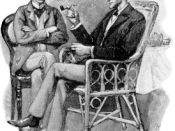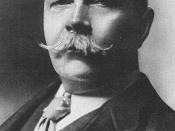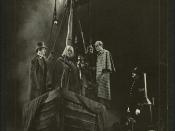During the Victorian era as Sir Arthur Conan Doyle created various adventures of Sherlock Holmes, he was surrounded by a patriarchal society. The assumption that women were inferior to men was true of that period. Women were expected to stay inside, raise the children, and perform "social" tasks. Men ate meat while women ate cake, strawberries, and custard (Bird 1). In various Sherlock Holmes stories featuring females, Doyle devises plots that depend on women, however they are often silent or physically absent even though they are vital to the narrative. Females are marginalized, controlled, and contained like colonized foreign subjects (Favor 398). Conan Doyle's views pertaining to women colored Sherlock's as he created three damsels- in - distress stories, "A Case of Identity," "The Copper Beeches," and "The Speckled Band," however, Doyle's first story, "A Scandal in Bohemia" reveals opposite outlook of women (Harrison 1).
According to Redmond (82), "all the women of the canon were victims-of the times they lived in....there was no need to be actually a victim, in 1895; it was quite enough to be a woman." It is not surprising that these women are not upper-class women as they would hardly find themselves in the sitting room of a middle-class detective. Sherlock Holmes's victims are the outcasts and prostitutes who are socially vulnerable enough to have problems that Holmes can solve; therefore they are the perfect damsels-in-distress (Redmond 82).
"A Case of Identity" is the first so-called damsel-in-distress story in which Sherlock Holmes's role is to rescue a female victim (Redmond 81). Miss Mary Sutherland arrives to 221b Baker Street to meet Sherlock Holmes as her fiancée had disappeared on the way to the church (Doyle 48). Mary Sutherland's stepfather Mr. Windibank, had committed fraud as he disguised himself as an...


